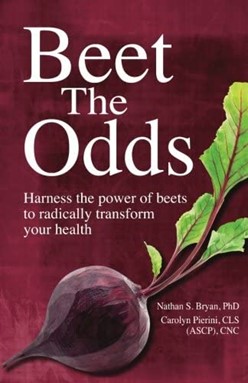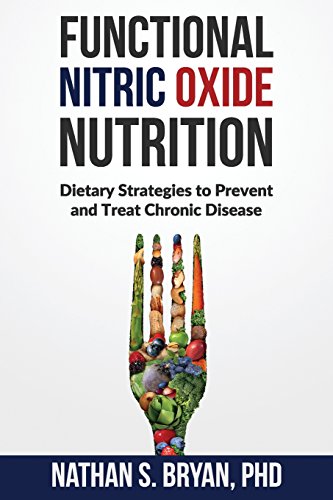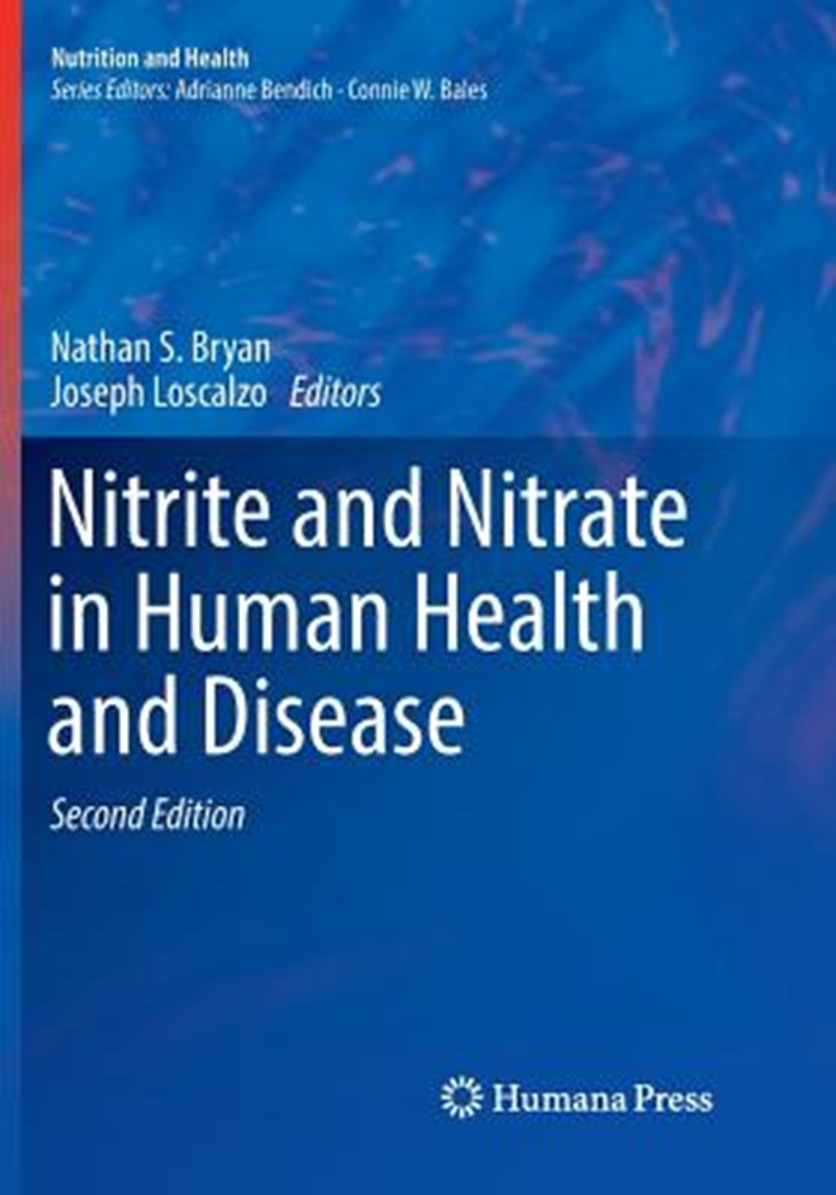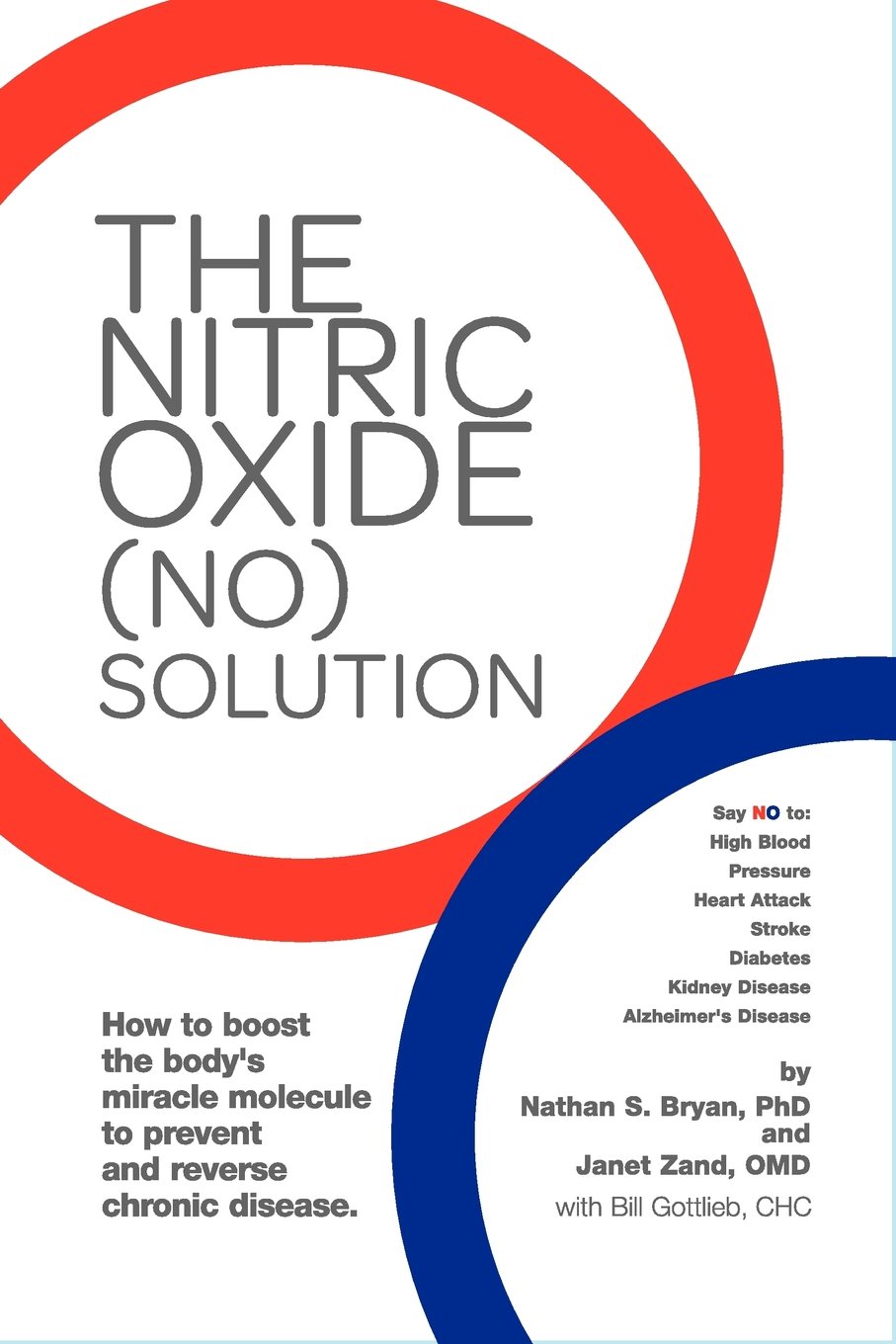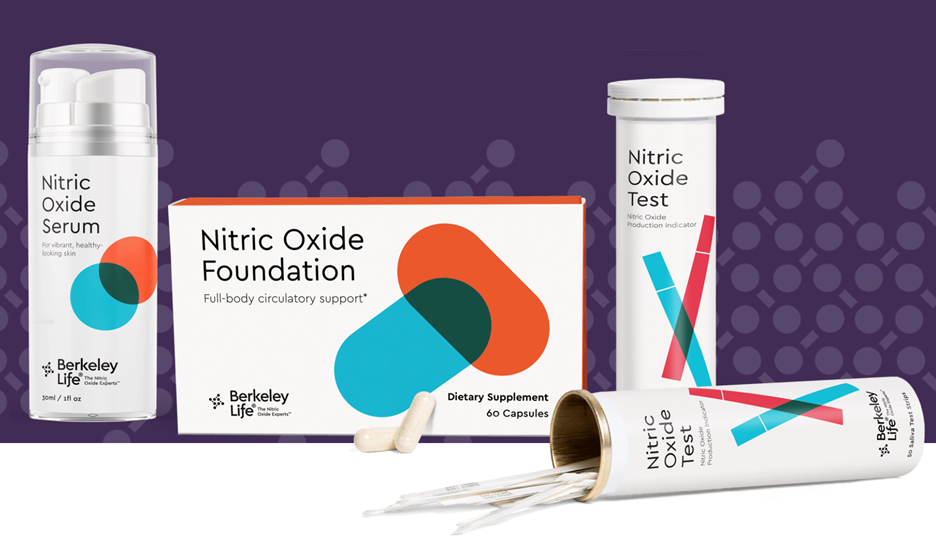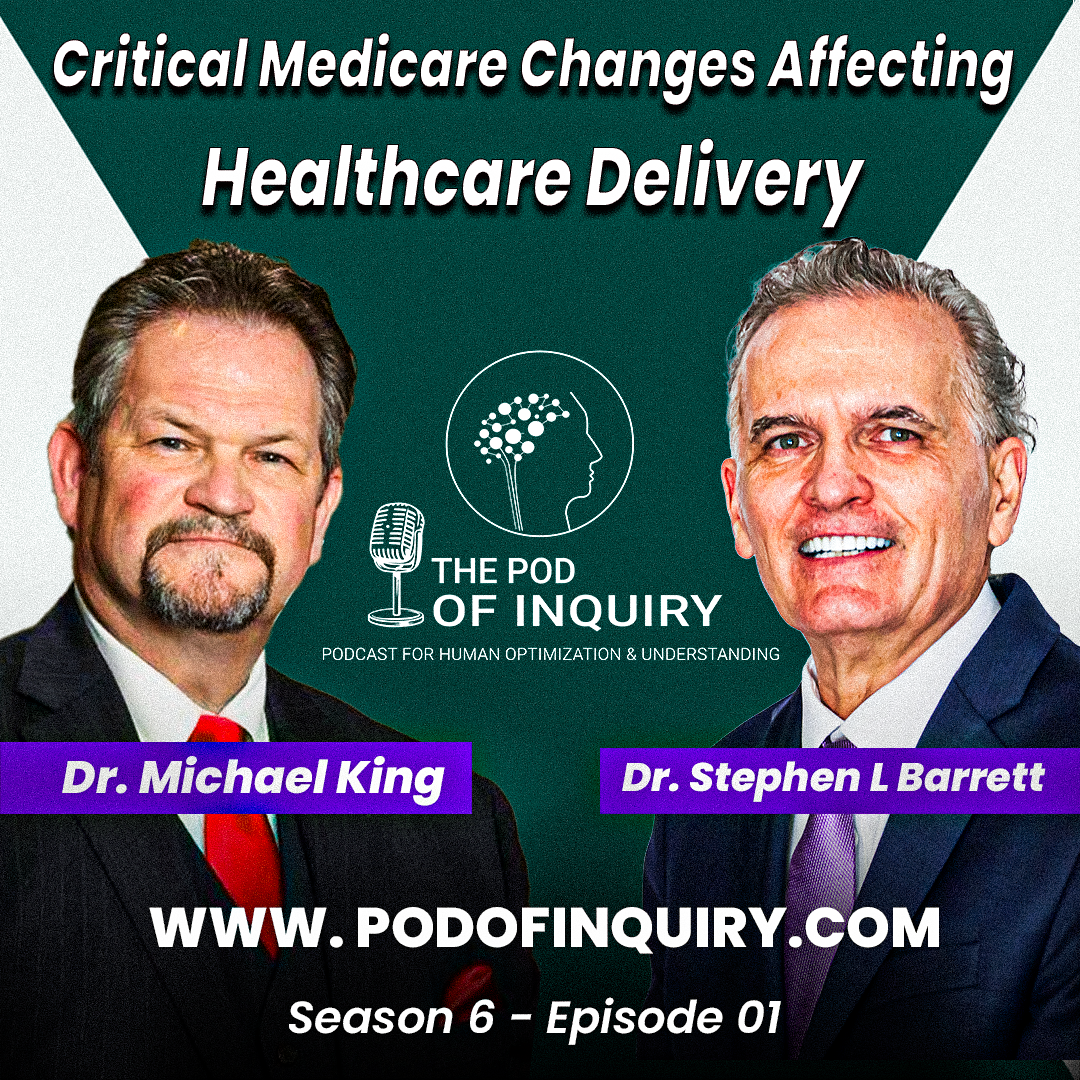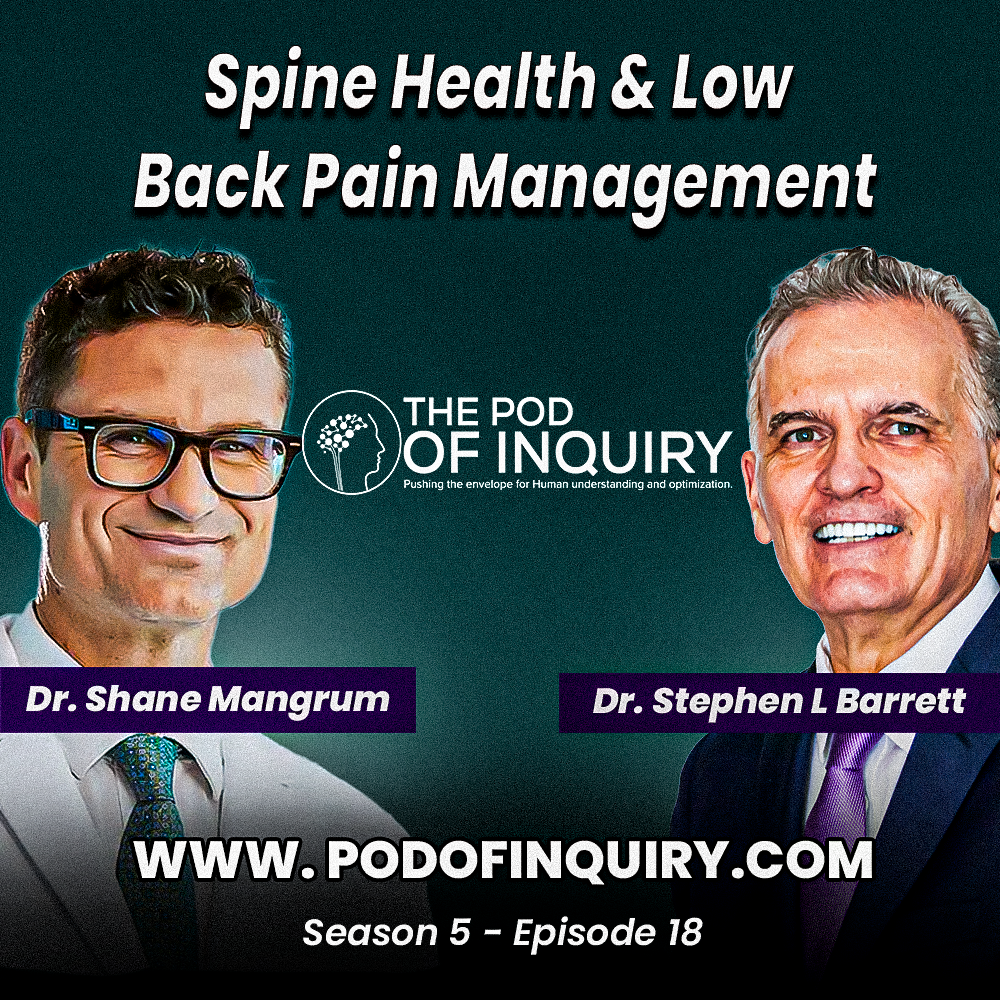Show Notes
Why You MUST Say YES to N:O
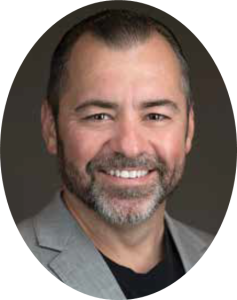
How Dr. Nathan Bryan ended up in the nitric oxide space?
- Bryan has always been interested in Science and Medicine
- He got a degree in biochemistry in University of Texas at Austin
- He did an eight-week research rotation in the LSU School of Medicine in Shreveport about nitric oxide
- He found it fascinating that this gas produced naturally in the body controls so many biological functions.
- He did a fellowship at the Boston University School of Medicine
- He continued the nitric oxide research: the role it plays in protecting and maintaining the integrity of the cardiovascular system
- He got his first faculty position at UT Medical School in Houston
- He spent the past 15-20 years on studying nitric oxide
- What goes wrong and people that can’t make it
- The clinical consequences
- How to fix nitric oxide deficiency
Nitric Oxide may be the single most important molecule in human physiology.
- Oxygen is the most important molecule.
- Without nitric oxide, you can’t deliver oxygen that you’re breathing into tissues and cells throughout the body.
- The cardiopulmonary cycle is a three gas system that requires nitric oxide, oxygen, and carbon dioxide
- The nitric oxide is produced in the pulmonary vasculature; it’s a vasodilator and bronchodilator
- It’s required to be bound to hemoglobin so that oxygen can come off when it goes from the arterial-venous transit in the capillaries.
- You can give patients supplemental oxygen, but without the functionality of nitric oxide, that oxygen will not come off hemoglobin
- Oxygen saturation may be normal, but systemically they may be hypoxic, because the oxygen does not come off
- You also can’t dilate the blood vessels and perfuse those cells
- If you’re nitric oxide deficient:
- You have reduced blood flow and circulation to the vascular bed, and then you can’t offload the oxygen to it.
- The cells become starved of oxygen, become nutrient depleted, and they create a hypoxic low pH environment; that’s hallmarks of every single major chronic disease.
- The consequence of that as you have increased inflammation, oxidative stress and immune dysfunction.
Our ability to synthesize nitric oxide decreases earlier than age 40.
Like many other things, such as testosterone or growth hormone, as we get older, our ability to synthesize nitric oxide decreases, especially in the endothelial cells within our vasculature that start around age 40, or is it earlier than that?
- It’s earlier than that.
- We start to see the effects of aging around the age of 40.
- We lose about 10 to 12% of our endothelial function per decade.
- This starts in the late teens or early 20s.
- You can accelerate this or you can decelerate depending upon diet and lifestyle.
- At 40, we only have about 50% of the nitric oxide than when we were younger
- This is the age that people feel the effects of aging
- 50% of the men over the age of 40, report some degree of erectile dysfunction; it is a condition of insufficient nitric oxide production
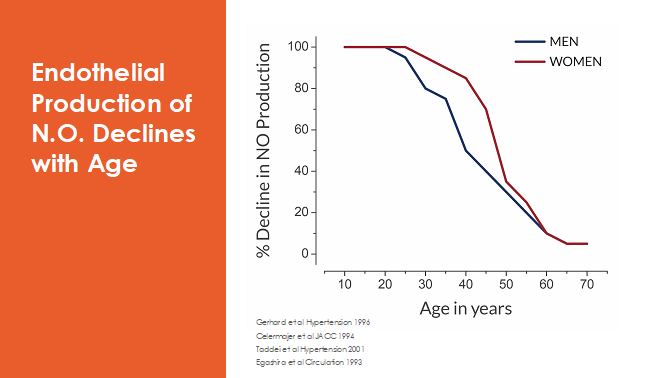
- These are general population based study
- There’s 18-20-year-old young folks that have the vascular age of a 50 or 60-year-old.
- To the contrary, Nathan will be 49, yet has the vascular age of a 26-year-old.
- We can correct and prevent age-related decline in nitric oxide production; we can accelerate it.
- Some young 20-year-old kids present with erectile dysfunction, metabolic syndrome, hypertension because they’re not making nitric oxide.
- It’s because of diet and lifestyle
- Some genetic predispositions
Determining age-appropriate nitric oxide levels
Are the nitrate test trips how you determine your age level from a nitric oxide standpoint? Or did you do that with the complex machines that you breathe into and it gives you numbers?
- These are non-invasive FDA cleared devices that give you an inside look at the vascular structure and function.
- The challenge in clinical medicine has been how to measure nitric oxide in patients
- Nitric oxide is a gas that once it’s produced, it’s gone in less than a second.
- Blood and lab orders cannot tell you what your nitric oxide levels are.
- About 12 years ago, Nathan has developed some salivary test strip. [LINK]
- It measures salivary nitrite; it acts as a proxy for total body nitric oxide availability.
- If you produce nitric oxide in the lining of the blood vessel, it’s oxidized to nitrite.
- If you’re getting nitrate from your diet, it’s concentrated in our salivary glands, then the bacteria reduce that to nitrite.
How nitric oxide is generated into the body and how they get disrupted by Proton Pump Inhibitors
“We eat foods that have nitrate, then the nitrate is broken down by our oral microbiome to nitrite. Nitrite then is swallowed, goes down into the stomach, and then the nitric oxide (NO) is generated there.”
- Proton pump inhibitors (PPI) disrupt nitric oxide from both pathways.
- There’s two ways the body makes nitric oxide.
- One is in somatically through the NOS enzyme
- The other is through nitrate-nitrite nitric oxide pathway.
- PPI specifically inhibit NO production in the stomach because you need stomach acid to make nitric oxide.
- The typical healthy pH of a healthy stomach is about 1-2.
- The parietal cells make hydrochloric acid because you have to have an acid environment in the stomach to kill off any pathogens or foodborne bacterium.
- You need stomach acid to absorb things like iron, B vitamins, selenium, chromium.
- We have to allow our parietal cells in the stomach to make hydrochloric acid acidify the stomach.
- PPIs lead to an accumulation of a molecule called Asymmetric dimethylarginine or ADMA.
- It inhibits nitric oxide production from the enzyme in the lining of the blood vessels.
- There’s clear evidence that people who have been on PPIs for three to five years have about a 35 to 40% incidence of heart attack and stroke.
By treating GERD, they have increased their odds of developing a cardiovascular event?
- Yes, these drugs were never approved by the FDA for chronic use; they were approved for acute use for gastroesophageal reflux disease or acid reflux.
- People are taking them every day; you can even get them over the counter.
- People are developing more heart attack and stroke
- We become nutrient deficient
- We can’t break down proteins into amino acids.
- We get peptide fragments absorbed across the gut
- We develop foodborne allergies and autoimmune disease.
- The worst thing you can do in human physiology is to suppress stomach acid production.
- There’s 200 million prescriptions written every year for proton pump inhibitors; it does not include over the counter purchases
- Probably 80% of the adult population is on acids suppressor
“We produce nitric oxide endogenously within our endothelial endovascular cells but that function decreases over time as part of the aging mechanism. We then produce nitric oxide exogenously which we, for lack of a better way to put it, what we eat.”
Mouthwash, L-arginine supplementation, and others that disrupt nitric oxide production and its consequences
“Once we understand how the body makes nitric oxide, only then can you really employ therapeutic strategies to restore nitric oxide production.”
- The terminal step in that particular pathway is that humans do not have a functional nitrate reductase enzyme.
- Without the bacteria, we just excrete nitrate in the urine, feces, or sweat.
- The bacteria that live in our body metabolize nitrate into nitrite.
- It occurs primarily in the oral cavity and in the lining of the gut for the bacteria in the gut.
- It provides nitrite, which is metabolically active in the nitric oxide gas.
What goes wrong in that pathway to make people nitric oxide deficient?
- PPIs and antacid suppress stomach acid production, then suppress nitric oxide production.
- If you disrupt the oral microbiome, the nitrate reducing bacteria, then you disrupt that first activation step of nitrate to nitrite.
The mouthwash study
- Studies have been published that if you use mouthwash, you see an increase in blood pressure. [LINK]
- Cardiologists think they can control blood pressure with ACE inhibitors or ARB calcium channel antagonist
- If you disrupt the oral microbiome, you develop hypertension.
- These oral nitrate reducing bacteria are regulating nitric oxide production systemically; it is regulating our blood pressure.
- 200 million Americans wake up every morning and use mouthwash; they have an unsafe elevation in blood pressure.
- It’s not a coincidence, it’s causal.
- Nathan has published studies of normal, healthy patients on mouthwash for seven days, without any change to their diet, medications, or physical activity, who had an increase in blood pressure; they killed the oral bacteria
- There’s oral systemic link that if you disrupt the oral microbiome, you’re causing systemic hypertension.
- Hypertension is the number one risk factor for cardiovascular disease; it is the number one killer of men and women worldwide.
- If you’re using mouthwash, you have to stop.
Others that disrupt the oral microbiome.
- Antibiotics have known consequences of disrupting the gastrointestinal microbiome and causing a lot of autoimmune disease and systemic disease.
- The ecology in the mouth of the bacteria is such that if you have a diverse oral microbiome, you can generate nitric oxide; it keeps the bad guys at bay.
“The more diverse the oral microbiome, the better the oral hygiene, the better the blood pressure.”
- Using fluoride in your toothpaste, which is a neurotoxin, is another bad thing.
- It’s an antiseptic; it destroys your thyroid function.
- If you are connected to municipal water, you have to remove the fluoride from your water supply; it’s a poison.
“We spend more money per capita on health care than any country in the world, and yet we have the sickest people.” –Nathan Bryan
The difference between L-arginine and nitric oxide supplementation
“Why should patients really think about taking nitric oxide supplements instead of L-arginine supplements?”
- When the Nobel Prize was awarded in 1998, there were companies who put products that contain L-arginine and labeled them as a nitric oxide product.
- The first pathway discovered was through an enzyme called nitric oxide synthase (NOS); it converts L-arginine into nitric oxide.
- The problem with people who become nitric oxide deficient is that the enzyme has lost its ability to convert the L-arginine to nitric oxide.
- It’s a very complex five electron oxidation reaction that requires a different cofactors and substrates.
- When the NOS enzyme becomes uncoupled, it can’t convert the L-arginine to nitric oxide.
- That converts the L-arginine to superoxide making the condition even worse.
- If you supplement a patient with L-arginine when their enzyme isn’t working, they become a super oxide synthase instead of a nitric oxide producer.
- The amount of arginine needed to bind to nitric oxide synthase is only five micromolar
- The sickest of patients’ circular intracellular in plasma levels of arginine are 100 to 200 micromolar; it’s 20 to 40 times more than what’s needed to bind to nitric oxide synthase.
- Giving arginine to a nitric oxide deficient patient is like putting gas in a car with a blown up engine. They’re not out of fuel, they’ve just lost the ability to convert the arginine to nitric oxide.
- There’s no need to supplement L-arginine; it makes patients worse.
- If you have some degree of endothelial dysfunction, you have to avoid L-arginine supplements
“Is there something specific that knocks out the NOS?”
- Yes, the rate limiting step in NOS uncoupling is oxidation of Tetrahydrobiopterin or BH4.
- When you oxidize BH4, that leads to NOS uncoupling, you get a disruption in the flow of electrons, and you reduce molecular oxygen to superoxide instead of producing nitric oxide.
“How do you reestablish that NOS function with just supplementation of nitric oxide?” [21:21]
- For the past 15 years, Nathan’s strategy has been to make the nitric oxide for you.
- To understand why individual patients can’t make nitric oxide
- Is it because the NOS uncoupled?
- Is it because they’re using mouthwash or antacids?
- Not getting enough nitrate in their diet?
- To create a strategy that works in everybody.
- In biochemistry, the redox potential is required to reduce one element or prevent the oxidation of molecules.
- There’s a certain redox potential or a voltage needed to prevent BH4 oxidation.
- That redox potential is put in the product technology and prevent BH4 oxidation.
- NOS enzyme can be recoupled which lead to better endothelial function.
How do we get more nitric oxide?
- The Holy Grail is how you restore and recapitulate nitric oxide production in the human body
- To prevent and treat a lot of age-related chronic diseases, especially ones that are poorly managed
- Both production pathways, the nitric oxide synthase and NOS recoupling, is only 50% of the production.
- How do we restore the other 50%?
- Diet: the nitrate that’s found in primarily green leafy vegetables.
- There’s a threshold of the amount of nitrate that we need in vegetables.
- Nathan measured the amount of nitrate in certain foods to make dietary recommendations or provide some guidelines.
- Bryan collaborated with Texas A&M university to take vegetables from five cities across the US and measured the nitrate content. [LINK]
- They published in 2015 that the amount of nitrate in these vegetables is highly variable.
- It is not only across vegetable categories from broccoli, cabbage, celery, lettuce, and spinach.
- Depend on where these vegetables were grown dictated how much nitrate they have.
- Best example is in Dallas or Los Angeles, five or six stalks of celery would give you enough nitrate to produce enough nitric oxide to lower your blood pressure. In New York, you will need 20 to 30 stalks of celery to get the same benefit.
- There’s really no way we can make dietary recommendations because it depends on which vegetable and in what geographical region in the US you live in
- Organically grown vegetables have on average of about 10 times less nitrate than conventionally grown vegetables.
- They have no herbicides or pesticides added
- You can’t add nitrogen based fertilizers to the soil
“We really are making conscious efforts to try to go to organic because we want to decrease the amounts of glyphosate that we know are very harmful to human physiology. So it looks like it’s a tradeoff. So I go to the supplementation route.”
How do we get nitric oxide through supplementation?
- Americans are nitrate deficient.
- We need about 300 to 400 milligrams of nitrate to see an appreciable formation of nitric oxide; the standard American diet (SAD) only gets about 150 milligrams.
- If we’re deficient in our diet, we have to supplement with a standardized nitrate capsule to have enough nitrate that can convert to nitric oxide
- If you’re using mouthwash, you can’t convert the nitrate.
- If you’re using fluoride, you’re killing the nitrate reducing bacteria.
- We need stomach acid production to facilitate this entire reaction, get off antacids.
- Combine that with restoring the endothelial function in the NOS enzyme.
- It doesn’t matter if you’re treating a patient with vascular dementia, Alzheimer’s, high blood pressure, erectile dysfunction (ED), peripheral neuropathy, insulin resistance; they are dependent upon sufficient nitric oxide production.
- Dosing the nitric oxide supplements
- Try to recapitulate physiology
- Don’t introduce into the body something that the body’s not used to seeing
- Too little’s not good, but there’s no added benefit by taking more.
“So while there may not be added benefit by taking more, are we ever worried about toxicity?”
- Yes, there’s two concerns for toxicity
- One is low blood pressure or hypotension.
- Two is Methemoglobinemia; it is oxidizing the iron of hemoglobin, and you reduce the oxygen carrying capacity of your red blood cell.
- You’ll see an unsafe drop in blood pressure long before you ever see any methemoglobin formation.
- Nitrate is inert; it’s very difficult to overdose on nitrate.
- There’s no need to take more than what’s needed
- For the capsules, take just two in the morning; it gives you 400-500 milligrams of nitrate
- The analogy would be from eating 150 grams of spinach. You don’t want to eat 150 grams of spinach—better to take 2 capsules of the supplement
- We ferment products to pre-convert the nitrate to nitrite.
- The Nitric Oxide Beetz
- The beet products are pre-converted
- When you dissolve this in water, we’re already generating nitric oxide gas.
- When you consume this, we’re liberating nitric oxide throughout the entire body.
- It improves performance that improves circulation and blood flow.
- The NO Beetz have a performance or hero vegetable by their ability to provide nitrate.
- Probably 98% of the beets on the market don’t do anything in terms of nitric oxide.
- The only thing they do is turn your pee and poop pink; they are called dead beets.
Ways to deliver nitric oxide
- One is through a lozenge [LINK]; this is real nitric oxide.
- We’ve developed a lozenge technology that when this matrix falls apart in the oral cavity, we’re generating nitric oxide gas.
“When we start weaning these patients off of their mouthwash, and their fluoridated toothpaste, they start with the lozenge first.”
- That’s right, or the NO Beetz powder. [LINK]
- A book Breath by James Nestor showed the same thing about creating hypertension with mouthwash.
- There’s a significant production of nitric oxide through nasal breathing and none through mouth breathing.
- “Keep your mouth shut at night and you’ll create more nitric oxide.”
- Nasal breathing increased about 50% heart rate variability within a week.
“If you breathe correctly and do nasal breathing, it lowers blood pressure.”
- You deliver nitric oxide gas through the nasal pharynx into the pulmonary circulation
- Nitric oxide is a vasodilator
- It’s dilating the blood vessels into the pulmonary circulation
- It’s matching the ventilation to perfusion ratio
- Nitric oxide is a bronchodilator.
- It’s dilating the smooth muscles of the airways
- You get better efficient gas exchange in the lungs
- The nitric oxide synthase is found in the epithelial cells.
- Mechanoreceptors on these epithelial cells activate nitric oxide production occur in the nasal pharynx; these aren’t activated in the mouth.
- Mouth breathing put a lot of oxygen and disrupt the oral microbiome and cause bad breath.
- If you have endothelial dysfunction, the NOS enzyme is uncoupled, then the same conditions exist in the epithelial cells.
- In older patients, we measure this with a nitric oxide analyzer.
- If you take young people and you do the nasal breathing, you can detect the nitric oxide gas coming from the breath.
- The older you get, the less nitric oxide you’re able to produce through nasal breathing.
- Sleep apnea and Hypoxia from mouth breathing or obstructive sleep apnea has devastating consequences.
- Your risk of heart attack and stroke go up through the roof
- We need oxygen to make nitric oxide and we need nitric oxide to deliver oxygen.
There’s a role nitric oxide plays in neurotransmitters.
- Nitric Oxide is also found in our neurons
- It’s part of neurotransmission; it’s a retrograde messenger
- It controls the synaptic-presynaptic modulation and release of other neurotransmitters
- Without nitric oxide
- You get less perfusion to cells of the brain
- The neurons become dysfunctional because the enzyme is uncoupled
“The most important thing you can do is restore the production of nitric oxide, because it’s clear that your body cannot and will not heal until you get nitric oxide being produced.”
How Nitric oxide plays a role in wounds
- It’s either an acute or chronic wound
- The underlying problem with all wounds is infection and lack of blood flow.
- How do you perfuse that wound to get granulation tissue growth and wound healing?
- Nitric oxide as antimicrobial kills bacteria
- It binds to the iron sulfur centers of bacteria and shuts down the respiration.
- It’s anti-viral; it prevents the virus from replicating.
- In diabetics, and non-healing ulcers, these patients are nitric oxide deficient.
- Nitric oxide is critically important in our own immune function
Topical nitric oxide
- With the systemic nitric oxide products, we can open up the microcirculation and perfuse a lot of hypoxic poorly perfused tissues.
- With topical nitric oxide, there’s a limit of diffusion of nitric oxide gas into the dermis
- When applied, you see the capillary recruitment and profusion, it turns pink.
- It’s antimicrobial; it can kill things like pseudomonas, staph, strep, MRSA, and other infections in the wound and improve blood flow to the wound.
Dr. Barrett did a randomized, prospective, single blinded study about topical nitric oxide [41:19]
- Nerve decompression patients with two incisions apply the topical serum to one of those two incisions and the surgeon doesn’t know which one it is.
- From the premise of looking at ultimate scar formation and the quality of the incision, it became unblinded very quickly by about the second week.
- In the incision with the serum applied to, there was no to little erythema that you traditionally see around the staples or the sutures.
- It was a topical antimicrobial
- It accelerated wound healing
- Possibly decreasing the potential for hypertrophic scar formation
Dr. Bryan has published clinical trials on remediation of scar formation
- The sooner you can put the topical nitric oxide serum [LINK]on the new scar, the better the scar or the less scarring that you get.
- We’ve seen it with fine lines and wrinkles.
- We’ve done it with an acne study.
- We’ve done it with wounds.
- Three and four-year-old non healing ulcers get complete healing within three to five months just by adding the nitric oxide.
Effect of topical nitric oxide on skin and collagen
- The skin is one of our biggest organs
- If you don’t get enough perfusion to the dermis, the skin fails.
- What is a failing skin look like?
- You get fine lines and wrinkles
- You lose collagen
- You lose hydration
- You start to get dermatitis
- The barrier function becomes compromised
- You look old
- When you apply nitric oxide topically, you restore the blood flow to those cells.
- Bryan is doing studies with biopsies
- Sees an improvement in collagen deposition
- Sees that the cells turn over more quickly
- One of the roles of nitric oxide is through mobilization of our own stem cells.
- When we sleep at night, we replace and repair old cells that don’t work properly.
- Nitric oxide is the signal that tells our own stem cells to mobilize and differentiate.
- When we restore the nitric oxide and apply it topically, we see an improvement in cellular turnover.
- We slough off the old cells, we build new cells.
- In those new cells, we get better collagen deposition, we hydrate the cells, we get the good stuff and the bad stuff out.
- You get better performing performance of that organ.
- The dermatitis goes away
- The age spots disappear
- Fine lines and wrinkles start to resolve
- People look younger
How nitric oxide supplementation regulate neurotransmitters
SPECT scans are very important noninvasive imaging
- It is a picture of how well the organ is perfused.
- Daniel Amen, the Amen clinics, has the largest database of SPECT Scans
- He has discovered that every neurological disease, there’s reduced blood flow to certain regions of the brain.
- This trauma that occurs or loss of perfusion or blood flow to certain regions of the brain manifest in certain neurological disease.
- His premise is if we can restore blood flow to the brain, then neurological function is restored.
- The key in restoring blood flow to the brain is through nitric oxide.
- In vascular dementia, there’s a known reduced blood flow to the prefrontal cortex
- If we restore nitric oxide production, in 30 days, we improve their perfusion and they improve their cognition.
- Measured by functional MRI.
- If you restore blood flow, you improve cognition.
- Whether it’s blood flow to the brain, sex organs, heart, and to every organ in the body for them to function.
Anti-inflammatory properties of nitric oxide
- Nitric oxide suppresses the upregulation of adhesion molecules at the level of the endothelial.
- It is similar in terms of macrophage and neutrophil, adherence to the blood vessel.
- The hallmarks of every chronic disease is inflammation, oxidative stress, and immune dysfunction.
- Nitric oxide inhibits inflammation.
- Nitric oxide inhibits oxidative stress through suppressing NADPH oxidase production of superoxide
- Nitric oxide recouples the electron transport chain to prevent electron leakage and superoxide production in the mitochondria.
“Nitric oxide improves circulation, inhibits inflammation, oxidative stress, and immune dysfunction; it gets to the root cause of most, if not all, major chronic diseases.”
Methylene Blue as an antagonist of nitric oxide
- I don’t think that question has been answered.
- At certain doses, methylene blue will oxidize the heme of soluble guanylate cyclase and prevent activation of NO binding to SGC.
- It inhibits the vasodilatory effects of NO
- You can specifically use methylene blue to prevent the so called SGC mediated effects or cyclic GMP effects of NO
- You then potentiate the effects of NO binding to cysteine tiles and affecting protein structure and function.
- As with anything, it’s dose dependent
- Micro dosing of methylene blue is having some protective effects in terms of viral load and from viral infections.
- I don’t know what it’s doing in terms of inhibiting nitric oxide production.
- Consider everything in moderation.
- If you overdo methylene blue, you’re inhibiting nitric oxide based signaling.
“We’ve been very successful at translating our basic science into human clinical translational medicine.”
Summary of Points
- The nitric oxide chemistry and science is very complex
- Every cell tissue and organ in the body is dependent upon adequate blood supply and oxygen delivery.
- The role of nitric oxide is to make sure that vascular bed and every cell that serves the organ tissue are adequately perfused.
- It gets the oxygen the nutrients it needs and those cells can do their job.
- Without oxygen or perfusion, those cells cannot perform and become dysfunctional. The tissue fails, you get into organ injury, and that’s the end of the story for the human disease.
- The role of nitric oxide to make sure that those vascular beds in those tissues are getting the oxygen the nutrients they need, and that there is less inflammation, oxidative stress and immune dysfunction, so that organ can perform.
- Every single major chronic disease that plagues Americans, or everybody worldwide, is all characterized by decreased blood flow.
Nitric Oxide plays a role with the GLUT4 transporter and insulin resistance
- Insulin resistance is the first stage of people developing metabolic syndrome.
- Hyperinsulinemia and hyperglycemia leads to inflammation, immune dysfunction, oxidative stress, loss of nitric oxide production
- We published in 2009 that nitric oxide is required for insulin signaling. [LINK]
- When insulin is secreted by the beta cells of the pancreas, it binds to the insulin receptor on liver cells, muscle cells, and fat cells, and initiates the insulin signaling pathway.
- The first part is you activate a number of protein kinases, that cause the signaling mechanisms in the terminal step that is glucose uptake.
- The role of GLUT4 protein is to clear glucose from the circulation, internalize it.
- GLUT4 is typically a cytosolic protein.
- When it’s activated, it goes to the membrane, recognizes, binds glucose, internalizes, and clears it from the circulation.
- In order for GLUT4 to get that signal, the cell has to be able to make nitric oxide.
- If the cell can’t make nitric oxide then GLUT4 doesn’t get the signal, there’s a disruption insulin signaling so you become insulin resistant.
- You develop hyperglycemia or hyperinsulinemia; it tells the pancreas it needs more insulin, secrete more insulin.
- The only way to correct that is to restore the functionality of nitric oxide
How to determine if you have insulin resistance
- Serum fasting insulin determines if you are insulin resistant
- The only true readout is doing a glucose tolerance test.
- You get to see how quickly patients get rid of glucose load
- Do a two-hour glucose tolerance test
- If they’re not clearing the glucose in the first hour, and they still have elevation two hours later, then they’re insulin resistant.
- Continuous glucose monitoring
- Using a Dexcom G6
- Try to keep that glucose range as tight as you can
How to contact Dr. Nathan Bryan and get more information on Nitric Oxide
Website: https://drnathansbryan.com/
Instagram: https://www.instagram.com/drnathansbryan
LinkedIn: https://www.linkedin.com/in/nathan-bryan-27586b7/
Twitter: https://twitter.com/DrNitric
Nitric Oxide Serum: https://n1o1.com/
Nitric Oxide Innovations: https://www.nitricoxideinnovations.com/
Nitric Oxide Beetz and Lozenges: https://no2u.com/
Berkeley Life is only available through licensed healthcare practitioners. Healthcare practitioner listeners to this podcast can get 15% off their first order of Berkeley Life when they use code ‘BLPOD15’ at checkout on www.berkeleylife.com. That’s ‘BLPOD15’ for 15% off your first order.
Optional: If you are not a healthcare practitioner but are interested in Berkeley Life, you can use code ‘SBARBL’ to register as a patient at www.berkeleylife.com to access the product.
Berkeley Life Nitric Oxide (S1 Ep 3)
Berkeley Life is only available through licensed healthcare practitioners. Healthcare practitioner listeners to this podcast can get 15% off their first order of Berkeley Life when they use code ‘BLPOD15’ at checkout on www.berkeleylife.com.
If you are not a healthcare practitioner but are interested in Berkeley Life, you can use code ‘SBARBL’ to register as a patient at www.berkeleylife.com to access the product.

